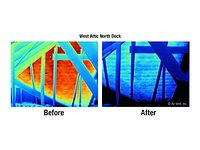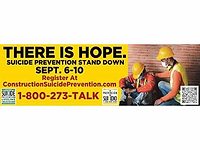DUBLIN, Calif. – With nearly half of Americans saying they are too tired to function properly at work, OSHA is warning roofing contractors and other employers to reduce the impact of demanding work schedules.
OSHA has established a webpage to provide employers with resources and information about reducing worker fatigue as a way of preventing incidents and injuries. The website includes frequently asked questions about extended and irregular work shifts and how to recognize the symptoms of worker fatigue.
“Long work hours and irregular work shifts are widespread in today’s workplace and may increase the risk of injuries and accidents due to worker fatigue, increased levels of stress and poor health,” says Cari Elofson, assistant director of the OSHA Training Institute Education Center at Chabot-Las Positas Community College District. “It’s important to address the issue of worker fatigue and its potential impact on each worker’s safety and health as well as on the safety of co-workers.”
It’s estimated that 13 percent of workplace injuries can be attributed to fatigue, and 43 percent of Americans admit they may be too tired to function safely at work. Research shows that working 12 hours per day is associated with a 37 percent increased risk of injury.
To hammer the point home, OSHA says decreased alertness from worker fatigue has been shown to be a factor in major industrial disasters, including the 2005 Texas City BP oil refinery explosion and the nuclear accidents at Chernobyl and Three Mile Island.
Worker fatigue has been studied in aviation and other modes of transportation, the military, emergency response, healthcare, firefighting, law enforcement and other fields. These studies provide several key strategies that roofing contractors and distributors can implement to mitigate risk factors associated with worker fatigue, including:
- Examining staffing issues, such as workload, work hours, understaffing, scheduled and unscheduled worker absences and other factors that may be contributing to worker fatigue
- Arranging schedules to allow frequent opportunities for rest breaks
- Adjusting the work environment with lighting, temperature and physical surroundings to increase alertness
- Providing worker education and training to address the hazards and symptoms of fatigue and its impact on health; the importance of adequate sleep, diet and exercise; and stress management strategies to minimize the adverse effects of fatigue
The website also features an overview of issues related to shift work and extended work hours from the National Institute for Occupational Safety and Health (NIOSH), and information and ideas on how to reduce workplace fatigue from the National Safety Council (NSC).
Visit www.osha.gov/SLTC/workerfatigue/index.html for more information.





